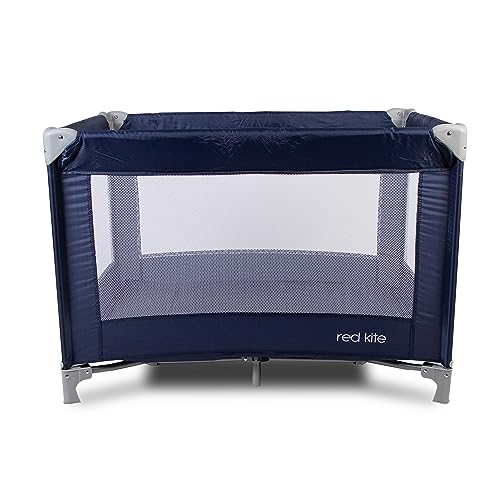The Essential Guide to Baby Cots in the UK
Picking the ideal cot for a newborn can be a difficult job for brand-new moms and dads. With various choices offered in the UK market, understanding the functions, safety requirements, and kinds of baby cots is essential. This article intends to supply a helpful introduction of the various baby cots offered, their advantages, and factors to consider for moms and dads in the UK.
Kinds Of Baby Cots
There are several kinds of baby cots readily available in the UK, each designed to satisfy different needs and preferences. The most common types include:
Standard Cots: These are standard baby cots that offer a safe sleeping environment for babies and infants. They normally feature adjustable mattress heights to suit the baby's growth.
Convertible Cots: Also known as 3-in-1 or 4-in-1 cots, these versatile options can change from a cot to a toddler bed and even into a full-size bed. They are created for prolonged use, making them an affordable choice.
Moses Baskets: Ideal for the early months, Moses baskets are lightweight and portable, making them easy to move around the home. They generally come with a detachable cover and a soft bed mattress.
Travel Cots: These cots are foldable and compact, specifically developed for moms and dads on the go. They feature a travel bag for easy transport and are ideal for pajama parties or holiday journeys.
Co-Sleepers: These cots are designed to connect to the parent's bed, enabling easy access to the baby during the night while ensuring the little one has their own safe sleeping space.
Table 1: Comparison of Baby Cot Types
| Kind of Cot | Age Range | Mobility | Durability | Cost Range |
|---|---|---|---|---|
| Standard Cot | Birth to 2 years | Low | Moderate | ₤ 120 - ₤ 300 |
| Convertible Cot | Birth to 5+ years | Moderate | High | ₤ 150 - ₤ 500 |
| Moses Basket | Birth to 6 months | High | Low | ₤ 40 - ₤ 150 |
| Travel Cot | Birth to 3 years | Very High | Low | ₤ 50 - ₤ 200 |
| Co-Sleeper | Birth to 6 months | Moderate | Low | ₤ 100 - ₤ 300 |
Security Standards for Baby Cots in the UK
Guaranteeing the security of a baby cot is critical. In the UK, all cots should abide by particular policies to ensure they are safe for usage. The following requirements must be met:
British Standard BS EN 716: This basic sets requirements for the safety and performance of kids's cots and folding cots.
Material Safety: The cot ought to be made from non-toxic materials that are free from damaging chemicals.
No Sharp Edges: Ensure there are no sharp edges or extending points that might hurt the baby.
Stable Structure: The cot should have a stable base to prevent tipping, and the slats should be spaced correctly to prevent the baby's head from getting caught.
Mattress Fit: The mattress should fit snugly in the cot, without any spaces that might position a suffocation risk.
Functions to Consider When Choosing a Baby Cot
When selecting a baby cot, parents should keep the following functions in mind:
Adjustable Mattress Heights: Cots with adjustable heights make it much easier to place and lift the baby as they grow.

Material Quality: Look for sustainably sourced wood or products that are both durable and safe for infants.
Relieve of Assembly: Cots that are easy to assemble and take apart can save parents time and aggravation.
Storage Options: Some cots include built-in storage drawers to keep baby fundamentals arranged.
Design and Aesthetic: Choose a cot style that fits well with the home design while guaranteeing it is functional and safe.
Frequently Asked Questions About Baby Cots in the UK
Q1: How much should I anticipate to invest on a baby cot?
A1: Prices for baby cots in the UK can vary widely based on type and brand, varying from ₤ 40 for a fundamental Moses basket to over ₤ 500 for high-end convertible cots.
Q2: When can my baby relocate to a cot from a crib?
A2: Most babies shift to a cot between 6 months and 2 years, depending on their size and mobility. It's crucial to monitor their developmental turning points.
Q3: Are second-hand cots safe to use?
A3: While pre-owned cots can be safe, guarantee they meet present security standards and reveal no indications of wear, damage, or remembers. It's suggested to avoid older models that may not abide by present policies.
Q4: Can I use a cot for a co-sleeping arrangement?
A4: Co-sleeper cots are developed particularly for this purpose, permitting you to keep your baby close while keeping a safe sleeping environment. Always abide by co-sleeping safety suggestions.
Q5: What is the very best bed mattress type for a baby cot?
A5: A firm and flat bed mattress is suggested for infants. Avoid soft bed mattress, as they increase the danger of suffocation. Ensure it fits comfortably in the cot without any gaps.
Choosing the right baby cot is a pivotal choice for brand-new moms and dads in the UK. It needs careful factor to consider of security guidelines, types of cots offered, and includes that deal with their specific requirements. By being knowledgeable, moms and dads can develop a safe and comfy sleeping environment for their babies, ensuring assurance during those important early months. Eventually, investing time in research can lead to an informed decision that stabilizes safety, comfort, and usefulness.
